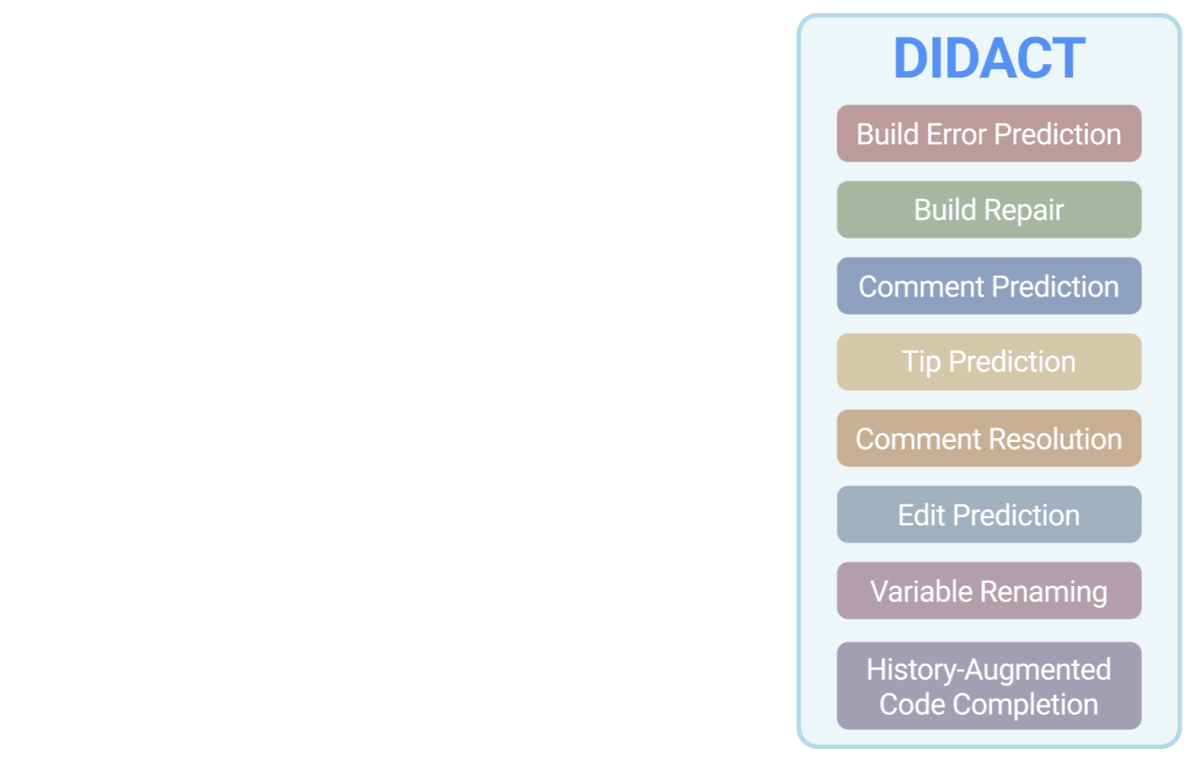Google AI has made a groundbreaking discovery in the realm of software engineering. In a new research project, they introduce DIDACT, a revolutionary technique that utilizes large machine learning (ML) models to enhance software development activities. DIDACT sets itself apart by leveraging data from the final software product and the entire development process. This breakthrough can potentially transform how developers create, edit, and improve code. Let’s delve into the details of this cutting-edge innovation and explore its implications for the future of software engineering.
Also Read: Meta Releases CodeCompose- AI-Powered Alternative to GitHub’s Copilot
Step-by-Step Journey to Software Excellence
Software development is an iterative process that involves numerous steps, from editing and running tests to fixing errors and incorporating feedback. Each stage contributes to refining the code until it can be merged into a code repository. However, this complex journey can now be augmented with the power of machine learning, thanks to Google AI’s latest discovery.
Introducing DIDACT: Enhancing Software Engineering with ML
Google AI’s research introduces DIDACT, a game-changing technique for training ML models specifically designed for software engineering activities. What sets DIDACT apart is its ability to extract training data from the final software product & the entire development process. By immersing ML models in the context that developers experience during their work, DIDACT enables them to learn about the dynamics of software development and align with developers’ behaviors and actions.

Leveraging Google’s Software Development Instrumentation
To enrich the volume and variety of developer-activity data, the Google AI team utilizes Google’s software development instrumentation. This allows DIDACT to tap into many real-world developer interactions and provide valuable suggestions to software engineers. The aim is to enhance their actions while working on software engineering projects.
Also Read: Alphabet unleashes Flowstate: Robotic App Development Platform for Everyone
Unlocking the Potential of DevScript
DIDACT employs a unique approach to address different software engineering tasks. By utilizing a formalism called “state-intent-action,” which encompasses a code file’s state, annotations (such as code-review comments or compiler failures) as intent, and the resulting action, DIDACT enables the representation of various tasks in a standardized manner. This formalism includes a scripting language known as “DevScript,” which acts as a miniature programming language, encompassing tasks like code formatting, commenting, variable renaming, error highlighting, and more.
Unleashing the Multimodal Power of DIDACT
DIDACT’s multimodal nature allows it to excel in one-off assistance activities. Surprisingly, unexpected talents emerge as a result. One notable feature is history enhancement, which enhances recommendations based on a developer’s previous actions. This is particularly evident in tasks such as history-augmented code completion, where the model can make more informed suggestions based on past edits.
Empowering Context-Aware Editing
Context plays a pivotal role in DIDACT’s capabilities. For example, when a developer deletes a function parameter, the model can use historical context to predict updates to related code sections, such as removing the parameter from the doc-string and updating statements. This context-aware approach eliminates the need for manual intervention and ensures syntactical and semantic correctness.
Also Read: Texting Just Got Magical: Google Unveils Magic Compose

Unveiling the Model’s Potential
The potential of DIDACT extends even further. For instance, researchers instructed the model to generate an entire code from a blank file, predicting the next changes step by step. Surprisingly, the model produced logically structured code that a programmer would understand. It began with creating a functional skeleton, including imports and a main function. It then progressively expanded to include more complex features such as file reading, writing, and filtering. This showcases the remarkable capabilities of DIDACT in assisting developers throughout the code creation process.
Also Read: Infosys Launches ‘Responsible by Design’ AI Platform Topaz for Businesses
Our Say
Google AI’s groundbreaking innovation, DIDACT, has the potential to revolutionize software engineering by leveraging machine learning in unprecedented ways. By immersing ML models in the context of software development and utilizing real-world data, DIDACT offers valuable suggestions, improves code quality, and empowers developers to work more efficiently. With the ability to predict the next steps, augment code completion, and create code from scratch, DIDACT marks a significant leap forward in integrating AI and software engineering. The future of software development looks brighter than ever, thanks to the transformative power of DIDACT.





